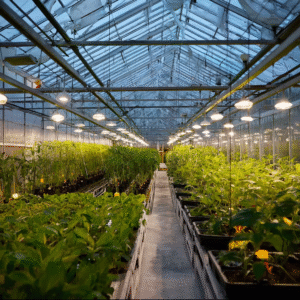In a world where energy costs are skyrocketing, energy rebates offer a powerful solution. These incentives help consumers and businesses save money while promoting sustainability.
Environmental concerns make these rebates even more vital. They reward adopting efficient technologies, from home appliances to industrial systems.
For indoor growers in fields like cannabis or hydroponics, rebates address high-energy needs. As of 2025, programs under the Inflation Reduction Act enhance accessibility.
This article covers how rebates work, provides a step-by-step guide, and focuses on indoor growers. We’ll highlight six proven programs to guide your actions.
How Energy Rebates Work: A Step-by-Step Guide
Energy rebates are financial incentives for energy conservation. They include cash-back, tax credits, or discounts.
The U.S. Department of Energy administers many at state or tribal levels. They support upgrades like appliances or renewables.
Tools like the ENERGY STAR Rebate Finder help find local offers. Enter your zip code for certified products [1].
To leverage rebates, follow a clear process. Here’s a step-by-step breakdown:
- Step 1: Research and Identify Eligibility – Check programs in your area. Eligibility depends on location, income, or project type. Contact utilities for details.
- Step 2: Select Qualifying Products – Choose ENERGY STAR-rated items or efficient systems. Federal programs favor clean energy like solar or heat pumps.
- Step 3: Purchase and Install – Buy approved products. Ensure professional installation if needed. Save receipts and proofs.
- Step 4: Submit Application – Apply via utility, state office, or IRS. Include documentation. Digital submissions speed up processing in 2025.
- Step 5: Verification and Approval – Providers review applications. Inspections may verify savings. Times vary by type.
- Step 6: Receive Incentive – Get a check, credit, or tax reduction. The Residential Clean Energy Credit offers 30% for solar from 2022-2032 [2].
Rebates differ from upfront incentives or tax offsets. Combining them maximizes impact, like HOMES with tax credits [3].
Benefits include cost reductions and lower bills. They also cut emissions and stabilize grids. In 2025, these are key for resilience.
Empowering Indoor Growers: Tackling High-Energy Challenges
Indoor growers face intense energy demands. Lights, ventilation, and controls drive up costs in cannabis or hydroponics.
A typical setup boosts bills significantly. The industry contributes to emissions, but efficiency can cut them by 96% [4].
Rebates target these challenges. They make upgrades affordable for sustainability.
For growers, strategic planning is essential. Prescriptive rebates cover standard equipment like LEDs. Custom ones fit unique projects.
Approval may take time, but rebates cover 10-50% of costs. This leads to 40-60% bill reductions.
LED Grow Lights Depot notes LEDs lower use and qualify for rebates. They transform economics [5].
Strategies include energy audits. Greenhouses use 37% less than warehouses. Select eligible tech like controlled LEDs.
Partner with utilities for guidance. In 2025, equity supports small growers. Stigma fades with alliances.
Combine rebates with tax credits. Integrate renewables like solar. Tools and consultants simplify the process.

Spotlight on 6 Proven Energy Rebate Programs for 2025
Here are six standout programs. They’re beneficial for growers and users:
- 1. LED Grow Lighting Rebates (Center for Energy and Environment) – Up to 60% on LEDs for Minnesota cannabis. Includes free consulting.
- 2. Agricultural Lighting and Equipment Rebate Program (DSIRE) – Up to $100 per fixture for LEDs. Incentives for coolers ($3,000) and units ($1,875).
- 3. Cannabis and Hemp Grow Operations Incentives (Energy Trust of Oregon) – Free services and cash for equipment in licensed ops.
- 4. Home Energy Rebates (Minnesota Department of Commerce) – $2,000 to $8,000 per home. Extendable to grow facilities.
- 5. Cannabis Resource Optimization Program (Colorado Energy Office) – No-cost audits for cultivators. Identifies upgrades.
- 6. Inflation Reduction Act Electric Appliance Rebates – Up to $4.5 billion for appliances. Includes dehumidifiers for grows.
These programs drive savings and sustainability.
Conclusion: Seize Rebates for a Thriving, Sustainable Future
Energy rebates empower savings and efficiency. They contribute to the environment.
For growers, they relieve energy burdens. They foster sustainable innovation.
Follow the steps and explore programs. Transform your strategy today.
Assess needs and apply. Unlock benefits now. For more information, contact us >>

